Public schools can provide a lot more than just an education for children.
For many going to school means reliable access to food, shelter, technology, and emotional support. But since Nevada Governor Steve Sisolak called for statewide K-12 school closures to help mitigate the spread of the coronavirus, many parents and teachers have been left wondering where students would find resources now.
The closure – that began during Washoe County’s spring break – greatly disrupted the lives of some families and school faculty because of the cancellation of day camps and other activities. Sisolak ordered schools to close until at least April 6, however they could remain so until the state chief medical officer decides that they’re safe enough to operate.
Washoe County School District (WCSD) has tried in the past week to find ways to account for the needs of these affected families. The district announced that school meals will be provided at ten locations, nine of them are local schools and one is a community center. These improvised food distribution plan will operate until April 3, Monday through Friday, at designated times. (School meals were also offered during spring Break but because of the spontaneous lockdown many families didn’t realize that the county would still provide food to students).
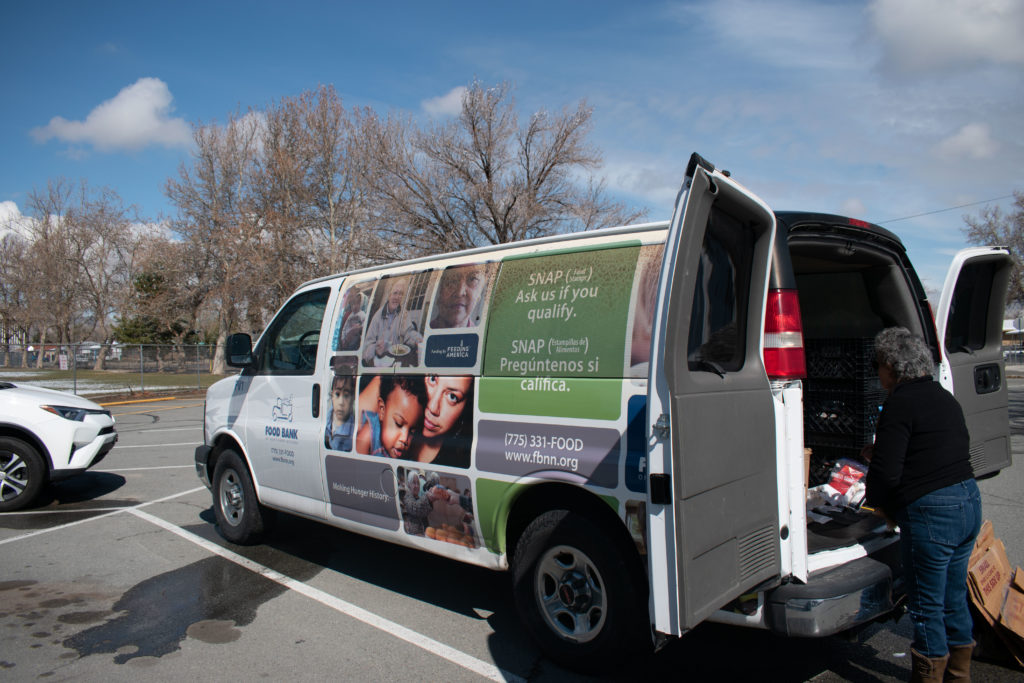
The Northern Nevada Food is collaborating with the Washoe County School District to distribute school meals during the mandated coronavirus building closures. Credit: Bianca Wright 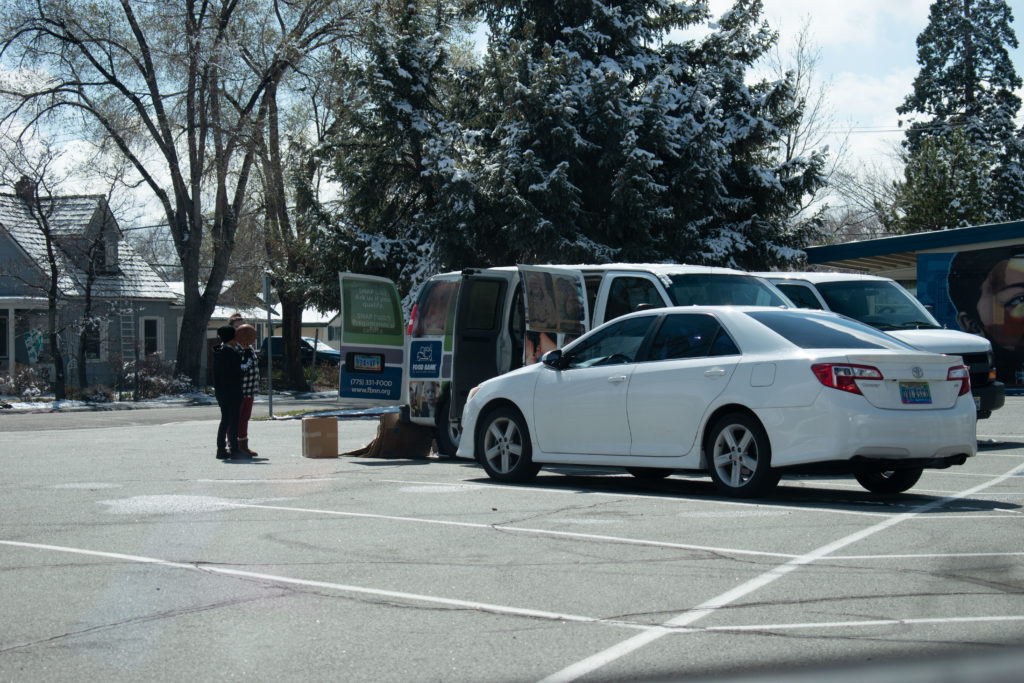
The two food bank workers explained the media has been publicizing the program, but they weren’t seeing a huge turnout. Credit: Bianca Wright 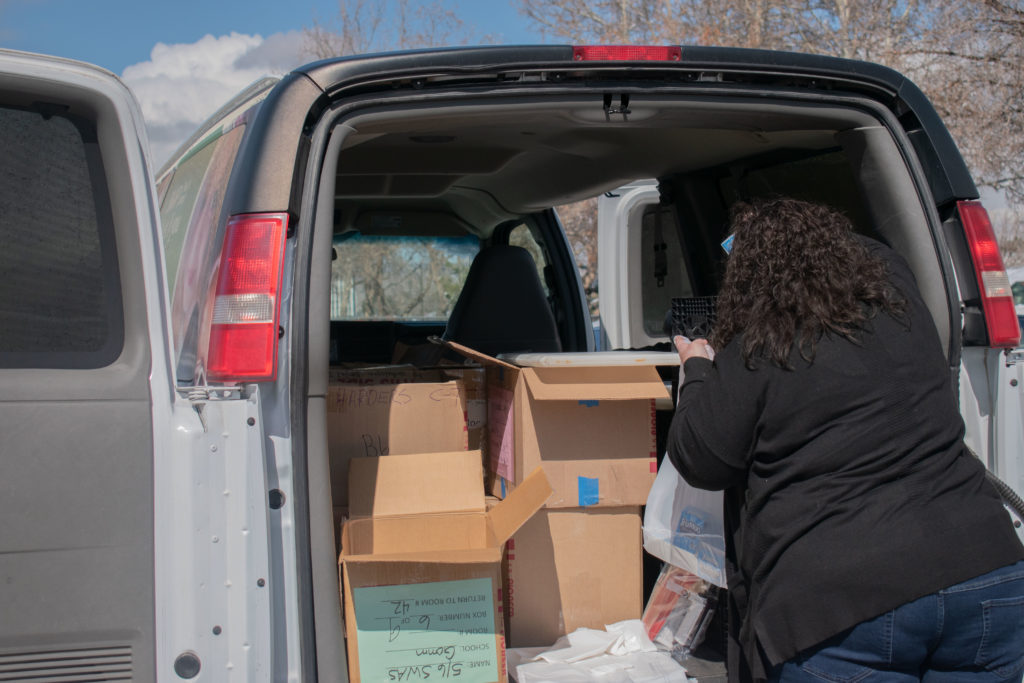
Two workers from a local food bank prepare to hand out food to parents of school age children. Credit: Bianca Wright 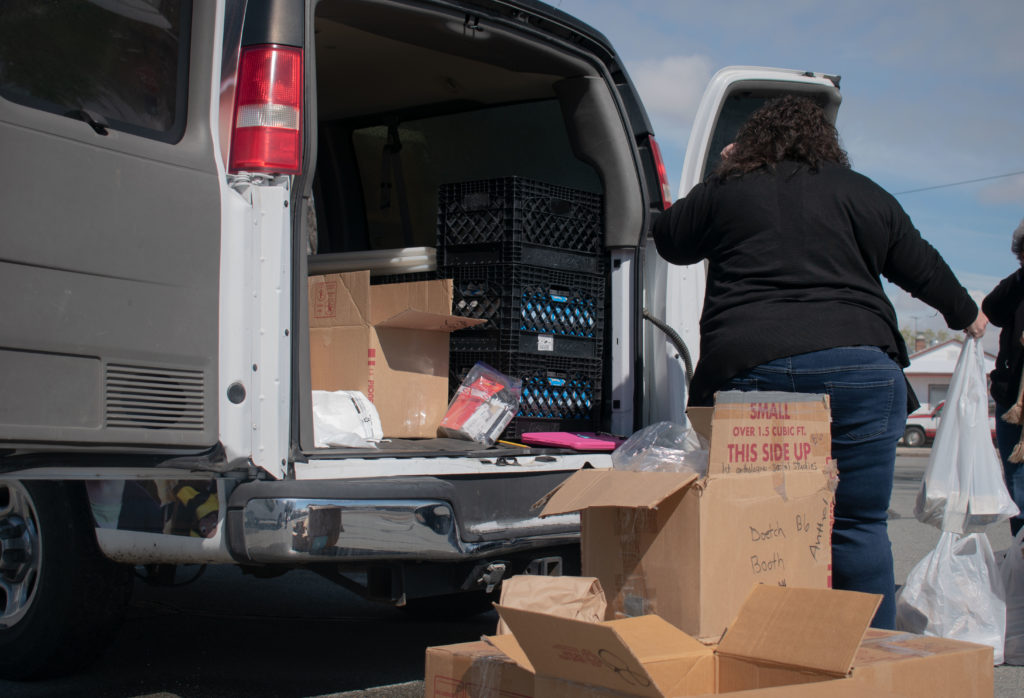
Northern Nevada Food Bank expects to provide each child with three meals (breakfast, lunch, and dinner) while schools are closed due to COVID-19. Credit: Bianca Wright 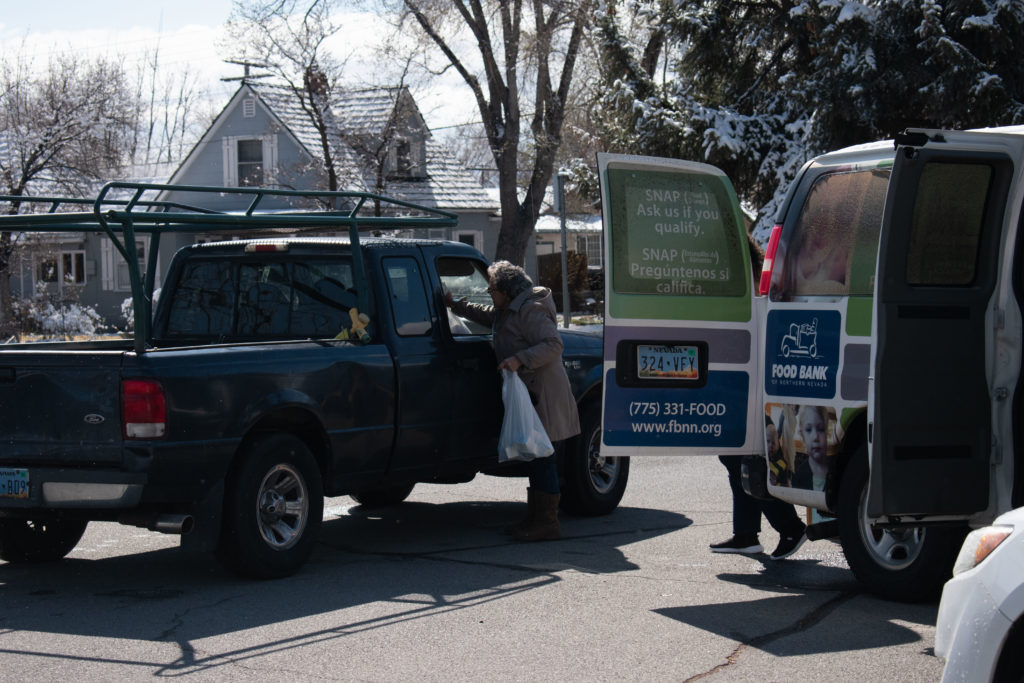
Parents have now been notified by phone about the free school meals available at ten school sites, like Libby Booth Elementary.
Despite this spontaneous solution, there are still many other concerns surrounding the closings.
Terri Shiffer, a science teacher at Clayton Middle School, is one of those who are thinking about the implications of shutting down schools. Because of her background in public health, Shiffer knew that school closures were necessary, but she’s concerned that some students will miss out on the resources that public education supplies.
“We have a diverse population,” Shiffer said to Noticiero Móvil over the phone. “We have lots of kids that are right up the poverty level, and [the closings] are hard when you know that school is a safe place for them.”
Since she has teachers in her family and multiple educational resources available, Shiffer continues her three children’s schooling from home without many issues. For other students, Shiffer expressed her fears.
“I’m worried about the majority of kids who don’t have human or technology resources,” Shiffer said. “Most don’t have teachers in their family.”
For parents like Karina Moore, a stay at home mom of four, things haven’t changed too much at her household. She already expected her kids to be home for break. Although, as spring break eventually comes to an end, she explained that she’ll have to figure out how to continue her children’s education online.
“I’m sure things will get more frustrating,” Moore said during a phone call. “We’ll just have to be creative with schooling and such.”
According to Moore, she hasn’t received any formal communication about how online learning will work. Other than suggestions from her kids’ teachers about supplemental educational resources, she still awaits further instruction. Shiffer expressed a similar sentiment, adding that even though her science curriculum can be delivered online, WCSD officials haven’t yet explained how it would all function.
In a March 17 press release, WCSD said that they are “in the final stages of developing plans for distance learning.” They did not address how they plan on accommodating those who may not have access to devices such as computers, but did mention that they are making an effort to provide assistance to all 64,000 students.
“[The] response to this situation is fluid,” press release stated. “WCSD will adjust plans to support students as information and additional guidance from the Nevada Department of Education becomes available.”
